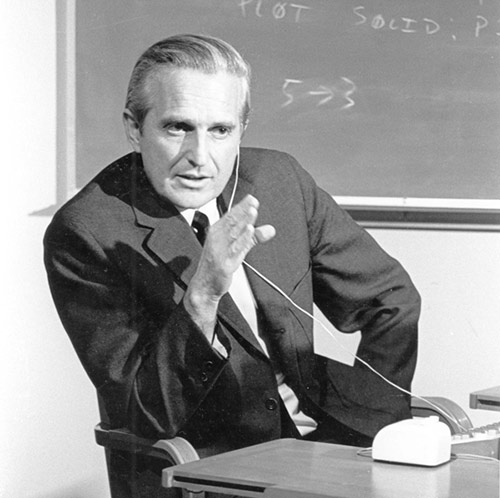Douglas Engelbart: Computer visionary
 Few inventors have had as much impact on modern computing as Douglas Engelbart (M.S.’53, Ph.D.’55 EECS). Engelbart had long aimed to make the world a better place, and early on in his career, he identified computers as a key tool for solving complex problems. He went on to invent the computer mouse in 1964, with a prototype that consisted of a block of pine, a circuit board and two metal wheels. He also designed the oNLine System, or NLS, a computer collaboration system that was foundational to the development of personal computers and the internet.
Few inventors have had as much impact on modern computing as Douglas Engelbart (M.S.’53, Ph.D.’55 EECS). Engelbart had long aimed to make the world a better place, and early on in his career, he identified computers as a key tool for solving complex problems. He went on to invent the computer mouse in 1964, with a prototype that consisted of a block of pine, a circuit board and two metal wheels. He also designed the oNLine System, or NLS, a computer collaboration system that was foundational to the development of personal computers and the internet.
In 1968, he demonstrated these inventions at the Fall Joint Computer Conference in San Francisco, in front of an audience of 1,000 leading scientists. In this 90-minute presentation, now referred to as the “mother of all demos,” Engelbart outlined the future of the information age, sharing his vision about networked personal computing, graphic interfaces (making use of a mouse), hypertext and collaborative concepts such as email and shared documents.
Over the course of his long and prolific career, Engelbart received numerous awards and honors, including the National Medal of Technology and the Turing Award.
< Back to previous page